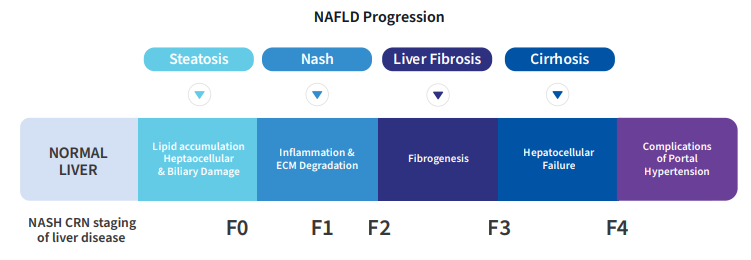Non-Alcoholic Steatohepatitis (NASH) Information for Patients
What is NASH? NASH is a form of fatty liver disease. According to researchers, one in four people is affected by fatty liver disease, which can develop for a number of reasons. There is good news, though. The effects of NASH can be reversible, mainly through lifestyle modifications. Changes such as eating healthier, increasing activity, and losing weight can improve or even reverse the effects of NASH. Knowing your risk is the first step to taking control of the disease.
How does NASH develop?
One of the primary functions of the liver is to process fat; whether breaking down carbohydrates and proteins for use by the body, or synthesizing other fats, like cholesterol, either for use in the body or removal (think: bathroom).
But the liver isn’t meant to store fat. When there is too much buildup of fat in the liver (more than 5%), this is called steatosis. As a means to protect the liver, inflammation and scarring (or fibrosis) starts to occur, and can negatively impact the liver’s primary jobs if it continues to progress without intervention, mainly through lifestyle changes.
When this happens in someone who is not a heavy drinker, it is referred to as Non-Alcoholic Steatohepatitis, or NASH.

.png)




